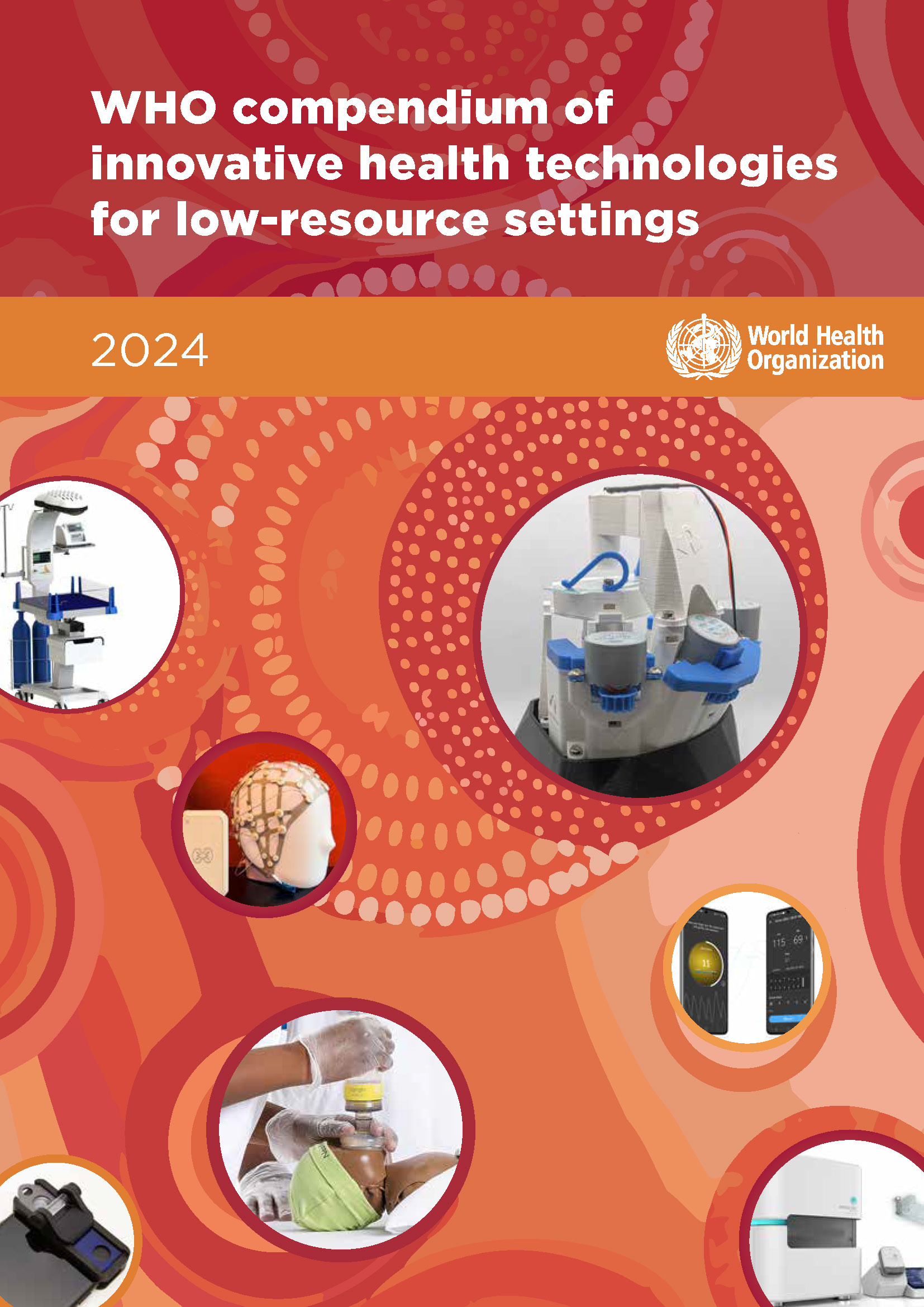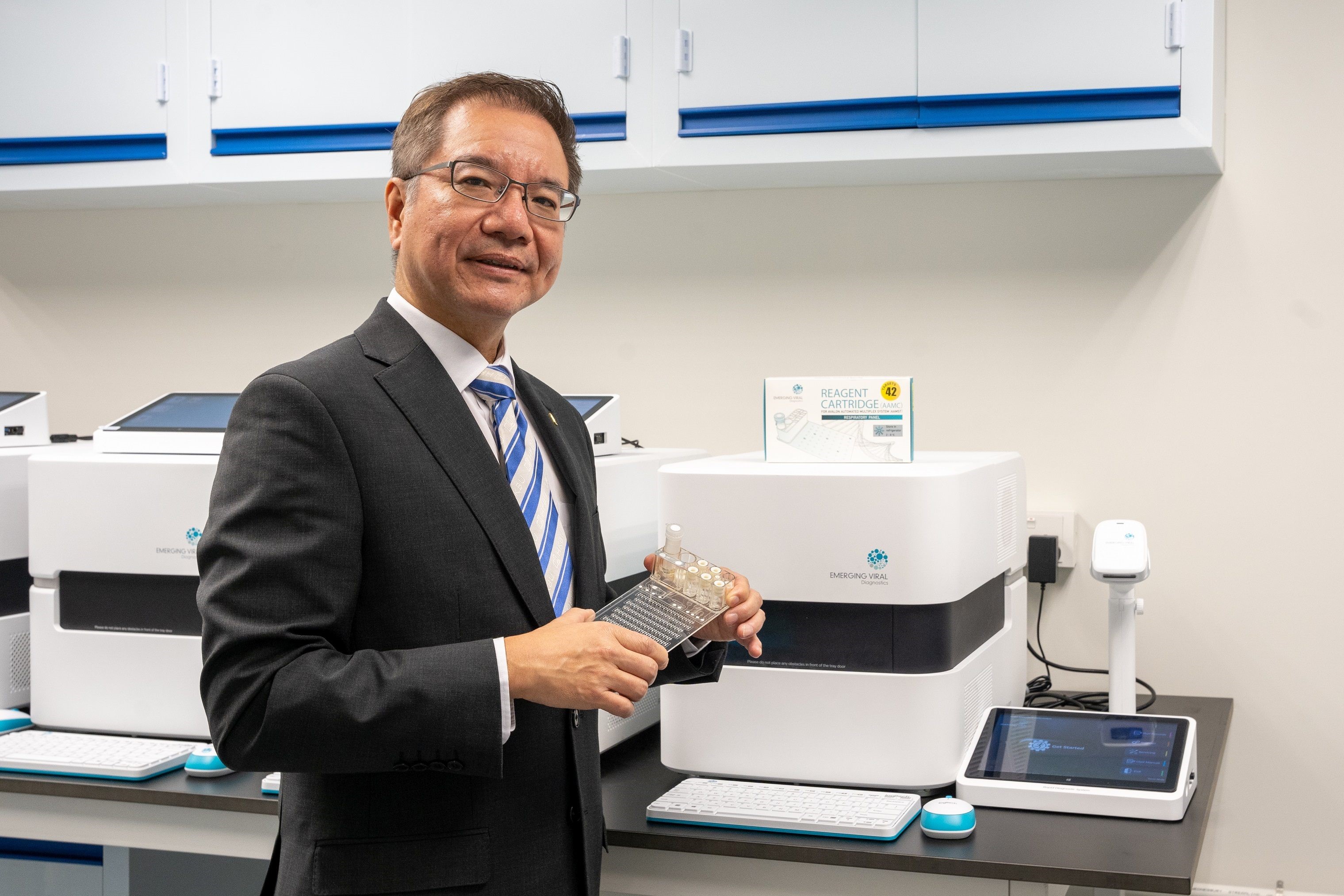News
HKBU scientist’s Automated Multiplex Diagnostics System recommended by WHO as an innovative health technology for low-resource contexts
3 Dec, 2024
The Automated Multiplex Diagnostics System developed by Professor Terence Lau, Interim Chief Innovation Officer of Hong Kong Baptist University (HKBU), has been recommended in the 2024 Compendium of Innovative Health Technologies for Low-resource Settings published by the World Health Organization (WHO) as an innovative technology with the potential to contribute positively to health systems in low- and middle-income countries.
Enabling rapid detection of multiple pathogens
The Compendium published by WHO identifies commercially available solutions and prototypes which help address the challenge of low-resource settings, particularly in low- and middle-income countries, in their access to appropriate, affordable, effective, and safe health technologies to tackle infectious diseases, as well as the increasing burden of non-communicable diseases brought about by cardiovascular issues, cancers, chronic respiratory conditions, and diabetes.


The System can fully automate conventional laboratory-based PCR (polymerase chain reaction) processes in an all-in-one system with three elements: an analytical machine, a microfluidic reagent cartridge, and software. Its proprietary design enables the simultaneous detection of 42 respiratory pathogens, including 28 viruses, 11 bacteria and 3 fungi, in less than 1.5 hours without the need for a resource-intensive laboratory, multiple equipment, or specially trained technicians while maintaining superior sensitivity and specificity.
Technology ready for market access
Apart from its extraordinary performance, it also provides advantages in terms of costs, turnaround time, and the ability to analyse more targets at once. It is selected as one of the 21 highlighted health technologies in the Compendium in the category of prototypes. Its technology readiness level (TRL) - an estimate of the maturity of a technology - is classified as TRL 8, meaning that it is a technology that has undergone large-scale testing leading to regulatory approval with further evidence generated. It is close to the most mature technology level of TRL 9, which means market access and adoption are ready.
The System is invented by a local research team led by Professor Terence Lau. Their idea of developing a fully automated, accurate, fast, and affordable multiple-pathogen molecular diagnostic device has emerged since 2015. It has been further developed to support the simultaneous detection of 40 targets, including SARS-CoV-2 which led to the COVID-19 outbreak, amid the soaring demand for timely and decentralised diagnostics in 2020.
The startup which Professor Lau co-founded has also paved the way for the System’s commercialisation, and has established ISO 13485 accredited production sites in Hong Kong and the Mainland, supplying the System to hospitals and clinics for usage.
Promoting equitable access and decentralised testing
“The System can identify infectious diseases and even non-communicable diseases, and is suitable for other non-medical applications. With the support from the Research, Academic and Industry Sectors One-plus Scheme (RAISe+) from the Innovation and Technology Commission, we target to develop multiple applications to further advance the System to make it smaller, faster and more cost effective,” said Professor Lau.
“With this System, we will be able to provide a comprehensive solution that can eventually promote equitable access and decentralised testing for an effective and high-quality healthcare system which WHO emphasises,” he added.
“This project is a real showcase of the journey from university research to commercialisation and application, demonstrating HKBU scientists’ dedication to transferring knowledge to benefit our society, not only to Hong Kong but also to the Nation and the world,” said Professor Alex Wai, President and Vice-Chancellor of HKBU.
The System’s clinical evaluation was carried out in two public hospitals, the Public Health Laboratory Centre, the Department of Health of the HKSAR Government, and was funded by the Public Sector Trial Scheme of the Innovation and Technology Fund. Surveillance research also started at a district center for disease control and prevention in the Mainland to develop a surveillance system that provides alerts on emerging trends of seasonal and regional prevalent pathogens, as well as early warnings on potential disease outbreaks.

